There are seven things
every student wants to know on the first day of school and one
of these is “How will I be graded?” The other six
can be found on page 105 in The First Days of School.
A child who doesn’t have a sense of direction and is
anxiety ridden over a lesson is a child who cannot learn.
Both teachers and students thrive best in a classroom
when there are a common set of outcomes.
One of the best ways to tell students upfront what is expected
of them is to use a scoring guide, more popularly known in education
as a rubric. In the past three columns, we have written
about rubrics:
October 2006 – “Assessing
Student Progress With a Rubric”
November 2006 – “How
to Write a Rubric”
December 2006/January 2007 – “Rubrics
in Two College Classes”
A Picture Rubric
If you are still a bit confused as to what a rubric is, this
picture will clarify it all.

What you see is a picture rubric. The
picture rubric was developed by Kathy Monroe, a first grade
teacher in San Jose, California.
Kathy has the four pictures drawn up ahead of time.
She shows the four pictures to the class and asks the students
which one they think is the best. She asks, “How
would you describe it?” This particular year, the class
answered “terrific.” She gives that picture a “4.”
“Which one is the next best?” she asks. They
agree on the word, “good.” That’s a “3.”
Kathy does the same for the remaining two pictures.
The four pictures are posted with their word descriptions and
point values.
She uses whatever the class says that year. Here are
words the students used in another school year in a picture
showing Kathy Monroe and a student..
When the students are drawing their illustrations, they are
welcome to go up to the rubric posted in the room and decide
if they have drawn a 4, 3, 2, or 1.
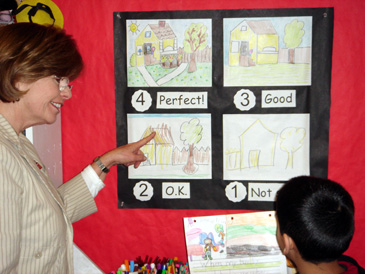
Rubrics help students to determine how their work will
be evaluated.
Does Kathy get good and terrific drawings from her students?
Of course, because
Students get more done when they see
where they are going and
what they are doing.
In our December 2006/January 2007 column we quoted student
Lauren Lunt, who said, “I like rubrics because they outline
exactly what is expected of you and how to earn a grade.
It also told me that she was prepared to teach.”
From a student’s point of view, it is very important
to see very vividly that “the teacher is prepared to teach.”
It creates a sense of comfort, security,
and confidence to see that
the teacher knows what he or she is teaching.
Named National Board Certified
Last month, December 2006, Karen Rogers, a high school
science teacher in Olathe, Kansas, earned National Board certification.
She is one of 55,000 National Board Certified Teachers, out
of over 3 million teachers. To learn more about how to
become a National Board Certified Teacher, go to www.nbpts.org.
We commend, congratulate, and applaud Karen on her dedication,
commitment, and professional accomplishment!

Karen shared five of her scoring guides with us. Karen
says that her scoring guides are not sophisticated guides, thus
making it easy for students to understand and follow.
She says that her students respond better when information is
in short and simple doses.
She has a scoring guide for
- Laboratory Report
- Graphing
- Group Discussion
- Presentations to the Class
- Presentations to the Class (listening)
Click here
to see Karen Rogers' scoring guides.
Karen says, “In my science classes, I use scoring guides
for writing lab reports and graphing. Writing a lab report
can be overwhelming for students. On my lab report scoring
guide, I list the criteria for each component (hypothesis, data,
analysis, etc.). That way, students can proceed with their
experiments and their reports in a simple, step-by-step fashion.
“I also use rubrics for graphing in science. Even
after giving directions, I discovered that I still needed to
verbally repeat certain things like the following: ‘Make
sure you have a title. Make sure it is labeled.
Make sure it is neat.’ Using the scoring guides
for graphing eliminates the repetition of explaining the important
components of making a proper graph.
“My students enjoy using the rubrics for several reasons.
Bryan Shephard says he likes them because they ‘tell
you what you need to know to do the assignment. You
don’t have to remember all the directions the teacher
said. You know how to get 100%.’
Nick Jahner agrees. Nick says, ‘With the scoring
guides, you can control your grade and know what you are going
to get in advance.’
Miles Miller likes them because, ‘they keep the grading
standard (uniform) and they give you the basic idea of what
needs to be done.’
“In addition to using rubrics for lab reports and graphing,
I also use simple rubrics for activities such as giving presentations,
listening to others, and participating in discussion.
They help reinforce procedures for these activities and clarify
expectations for students.”
She concludes by stating that she often modifies her scoring
guides to suit a particular activity. The scoring guides
that Karen Rogers uses can easily be applied to all other subjects
where students need to
- write reports,
- collect and display data,
- be involved in group discussion,
- make presentations to the class, and
- listen when others are making presentations.
Constructing Your Own Rubric
Using Karen’s scoring guides or rubrics you can construct
your own rubric.
A rubric has three parts. These indicate
the criteria for a piece of work or what counts.
- Criteria: Name the category or trait
that will serve as a basis for determining the student work.
- Point Values: Keep this simple. A
scale of values from 0 to 4 fits most performance levels.
- Performance Expected: Define and
give examples of the level of performance expected to earn
a point value. This helps the students to judge and revise
their own work before handing in their assignments.
Use Karen’s scoring guides as a starting point
in designing your own scoring guides.
Use RubiStar to Construct a Rubric
In our October 2006 column, “Assessing
Student Progress With a Rubric,” we shared a rubric
designed by high school English teacher Norm Dannen that he
used with his lesson on the novel, The Great Gatsby.

Diana Greenhouse uses a rubric on the novel, Baseball
Fever. We wrote about Diana Greenhouse in
our October 2005 column, “Classroom
Management Is Not Discipline.” The book is about a
boy who wants to play baseball, but his father wants him to
play chess. The conflict makes for great class discussion.
If you want to know what happens, you’ll have to read
the book written by Johanna Hurwitz!
Diana uses the novel to involve the class in what she
calls "Inner-Outer Discussion."
After the class reads a novel, she asks the students to construct
five questions for discussion.
In preparation for the discussion, she sets up a double circle
of chairs. The inner circle of chairs faces in, and the
outer circle of chairs faces out. The chairs are back
to back, making an inner and an outer circle of seats.
Students in the inner circle will be the first discussion group,
while the students on the outer circle ask the questions they
prepared for discussion and take notes. The questions
and notes are all turned in to Diana.
The students are handed their rubric before the activity
begins. It is reviewed and discussed so that
they are aware of what is expected of them as they prepare for
the discussion..
Diana explains that while the inner circle (facing in) is having
their discussion, the outer circle (facing out) simply listens.
They are not allowed to have verbal input; their role is to
be active listeners. When prompted to do so by the facilitator,
they ask the discussion questions and take notes. This
helps to develop listening skills.
The students in the outer circle are always eager to have their
turn at discussion because they have been listening and have
a tremendous amount of input bottled up, or written in their
notes. Most are very busy writing down important points
or jotting down their thoughts.
Everyone has a novel, a notebook with their questions, paper
for taking notes, and their rubric. Diana randomly selects
a discussion group facilitator, and the discussion and learning
begin. After 20 minutes, the groups switch roles and a
new discussion group begins.
Diana says, “I look forward to these "Inner-Outer
Discussions," because I enjoy watching my students take
charge of the lesson. They are developing good thinking,
listening, and speaking habits. My students enjoy
the discussions and appreciate the use of the rubric because
they know exactly what I'm looking for and are better able to
control their own grade. They say they feel a
sense of power, and that thrills me because empowering students
is one of my daily goals!”
Diana says, “This is a wonderful activity to
observe and my students amaze me every time!”
To see Diana Greenhouse’s rubric for Baseball
Fever, click here.
Although it is possible to construct your own rubrics from
scratch, many teachers find it simpler to adopt or modify existing
rubrics. Diana constructed her rubric with the help of
information, models, and examples found on Rubistar, http://rubistar.4teachers.org.
RubiStar is a tool teachers can use to help
learn how to devise and use rubrics. Many examples are
given so that you can save time rather than develop a rubric
from scratch.
RubiStar gives you the ability to view, edit, and analyze a
saved rubric. You can also use RubiStar to help you analyze
the performance of your whole class.
Students Want to Know the Goals of the Class
Stephen Covey says in his book, Seven Habits of Highly
Effective People, “To begin with the end in mind
means to start with a clear understanding of your destination.”
When both the students and the teacher
are moving towards the same goal,
that’s when you get learning.
Thus, the effective teacher does the following:
- Presents a lesson with an objective that focuses the goal
of the lesson.
- Aligns the lesson to district or state standards.
- Uses activities that teach the objective.
- Assesses based on a test or rubric that is aligned to the
lesson objectives.
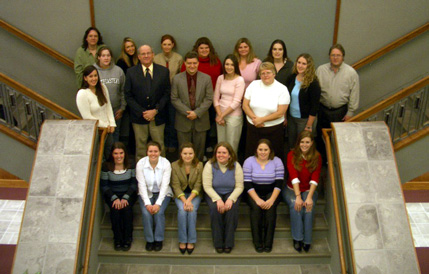
An understanding of these four principles used by effective
teachers can be seen and sung with a song written by Jim Wilhite,
professor of education at Northeastern State University in Oklahoma
and his students.
With Wong expectations and high motivation
Our kids will come to class with a smile.
They’ll be the first ones to show, the last ones to
go
And we’ll take them that extra mile.
And we’ll ease the surprise and the fear in their eyes
When we welcome them to our class.
They know the goals and everyone
knows their roles
And this year will be a blast...
Click here if
you would like the rest of the song and the tune it is sung
to.
Whipping Up Success
Admit it. You love cookbooks with loads of color photos.
Why? Those pictures set the standard for your level of success
in duplicating the recipe. That glossy full page image
of the double fudge chocolate cheesecake is your rubric.
The Criteria: Making the double fudge chocolate cheesecake
Point Values: 0 – 4
Performance Expected:
| 0 = |
You’re not a baker and
didn’t even attempt it. |
| 1 = |
Your cheesecake sank in the center, is
burned around the edges, and the chocolate topping is
thin and runny. |
| 2 = |
Your cheesecake sank in the center and
is burned around the edges. |
| 3 = |
Your cheesecake sank in the center. |
| 4 = |
Your cheesecake is picture perfect—nice
high rise, clean cooked edges, and creamy chocolate topping. |
However, teaching is not just giving the students the rubric.
Creating the rubric is just one small piece of the total instructional
picture.
You must provide the lesson objective,
instruction and guidance
to help the students achieve success.
If the cookbook provides the photo, but no guidance in making
the cheesecake, you’re doomed to failure. The clearer
the instruction, the more apt you to succeed. The same
is true in the classroom.
The rubric provides the clear image of success. Before
instruction begins, the students can visualize their accomplishment.
Surely you’ve said as you’ve thumbed through a
magazine, “That dish looks so good, I can smell it!”
Create rubrics for your lessons so your students can smell
sweet success!




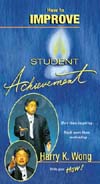
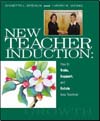
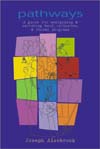


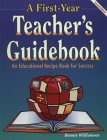
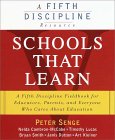

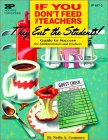
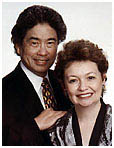 Effective
Teaching...
Effective
Teaching... 



